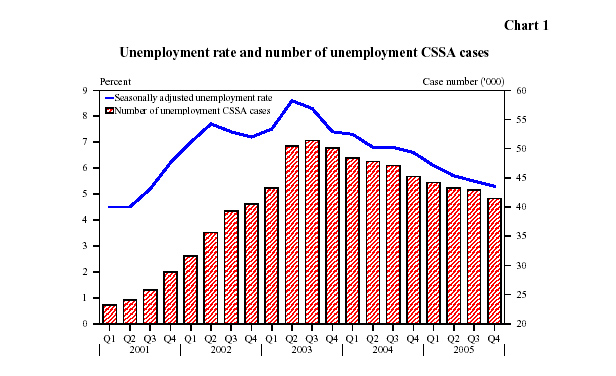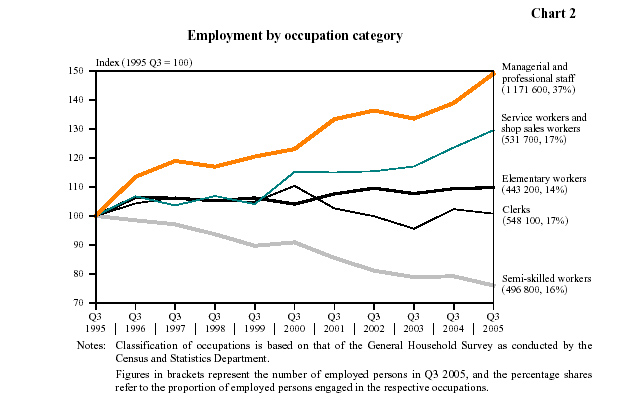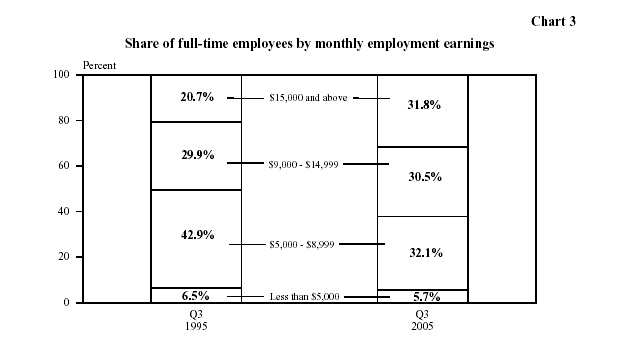Recovery
Economic Performance
5. In 2005, Hong Kong's economy continued to expand rapidly. Following an increase of 8.6 per cent in 2004, our Gross Domestic Product (GDP) registered a growth of 7.3 per cent last year. Exports of goods and services enjoyed remarkable growth; fixed asset investment rose further and consumer spending continued to rise. Asset prices trended up gradually, and the financial situation of many families and individuals in Hong Kong improved.
6. 240 000 new jobs have been created over the past couple of years as a result of our economy's recovery. Total employment reached a new high of 3.43 million. Recently, the unemployment rate fell from 8.6 per cent in mid-2003 to a four-year low of 5.2 per cent. The number of long-term unemployed also fell from its peak of 93 000 to 57 000. As at the end of last month, the number of unemployment Comprehensive Social Security Assistance (CSSA) cases was 10 300 less than the high of 51 400 in 2003.

7. As the employment situation improved, wages and income also moved up gradually. The average wage of workers in the middle to lower segments of the market increased again in 2005 after falling for a number of years. With the additional job opportunities, the income of many grass-root families also rose noticeably.
8. Hong Kong's economy has been restructuring itself to move up the value chain and has created many high-salaried jobs. In recent years, our workforce has grown at an average annual rate of 1 per cent, while the corresponding rate for the more highly-skilled, professional and managerial workforce is close to 4 per cent. Today, one in three of our working population belongs in this category. Due to the strong economic recovery, the supply of certain professionals is actually falling short of demand. The number of full-time employees with a monthly income of $15,000 or above has risen from 470 000 in 1995 to 790 000 in 2005. This represents an increase from 21 per cent to nearly one third of the total number of full-time employees. In contrast, the number of people earning less than $9,000 a month fell from 1.12 million to 930 000, which translates into a drop from almost 50 per cent to 38 per cent. The number of employees earning less than $5,000 a month last year was below 6 per cent.


9. I understand, however, that certain industries, such as those related to construction, and their employees have yet to benefit from the current economic recovery. Some small and medium enterprises (SMEs) have also yet to feel its effects, or may have been adversely affected by rises in rents and other costs.
10. The strong economic rebound reflects the resilience of the market, and the tenacity and adaptability of our people. Self-reliance in adversity has always been our watchword. Our enterprises took the opportunity, when our economy was at its lowest ebb, to upgrade their efficiency and rationalise their businesses. That has greatly strengthened the resilience of our economy, and laid a solid foundation for the current upturn.

